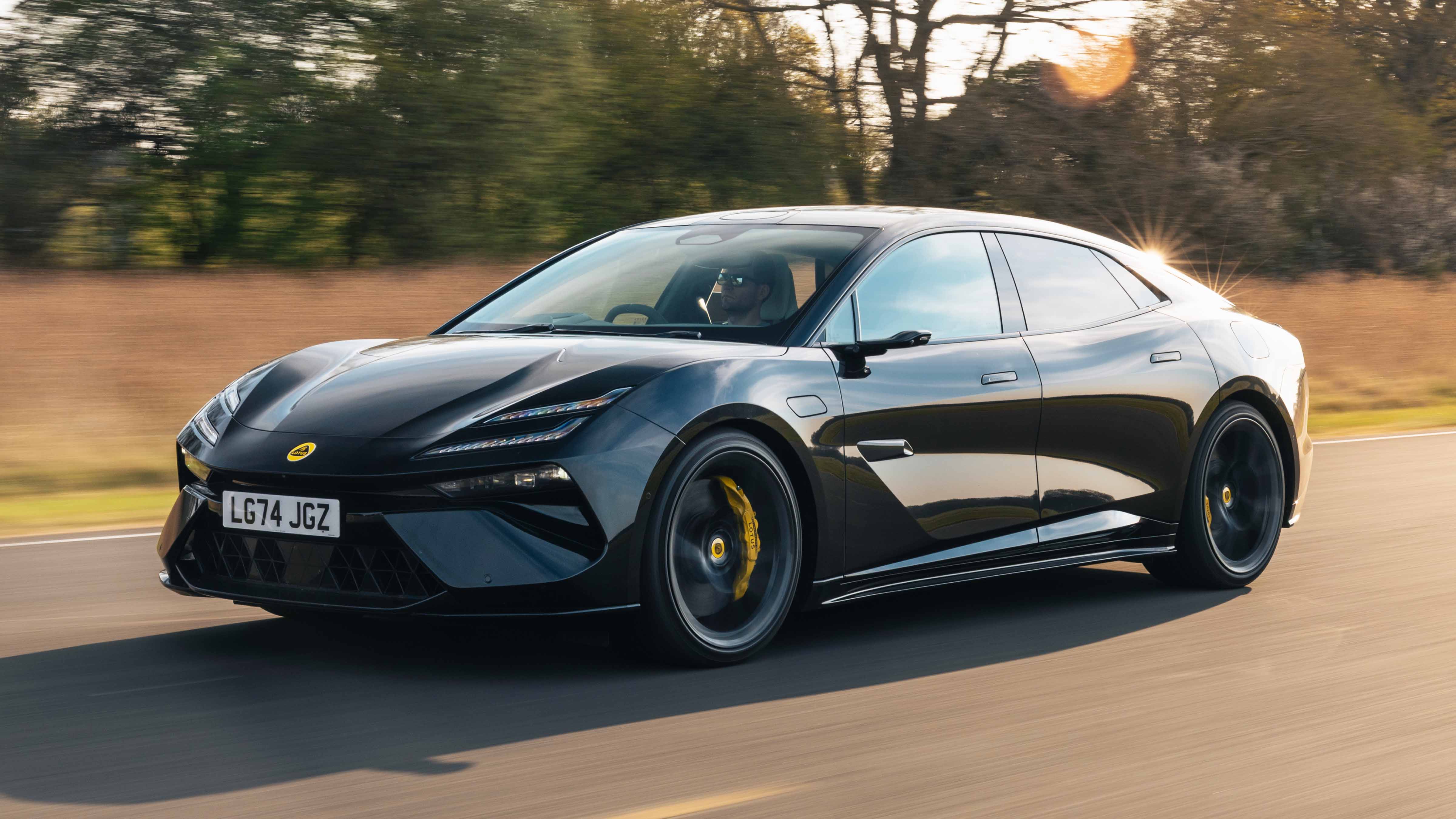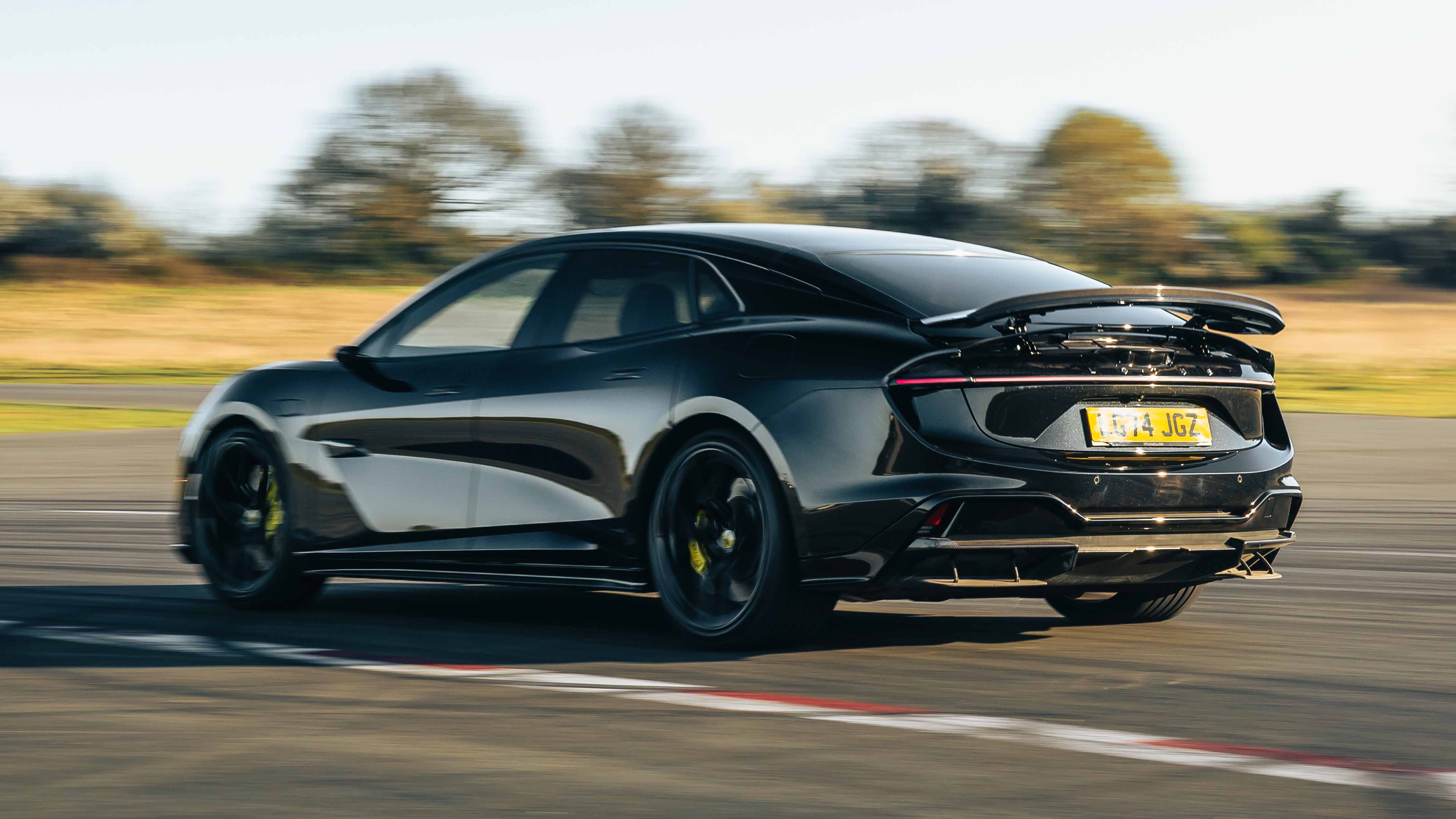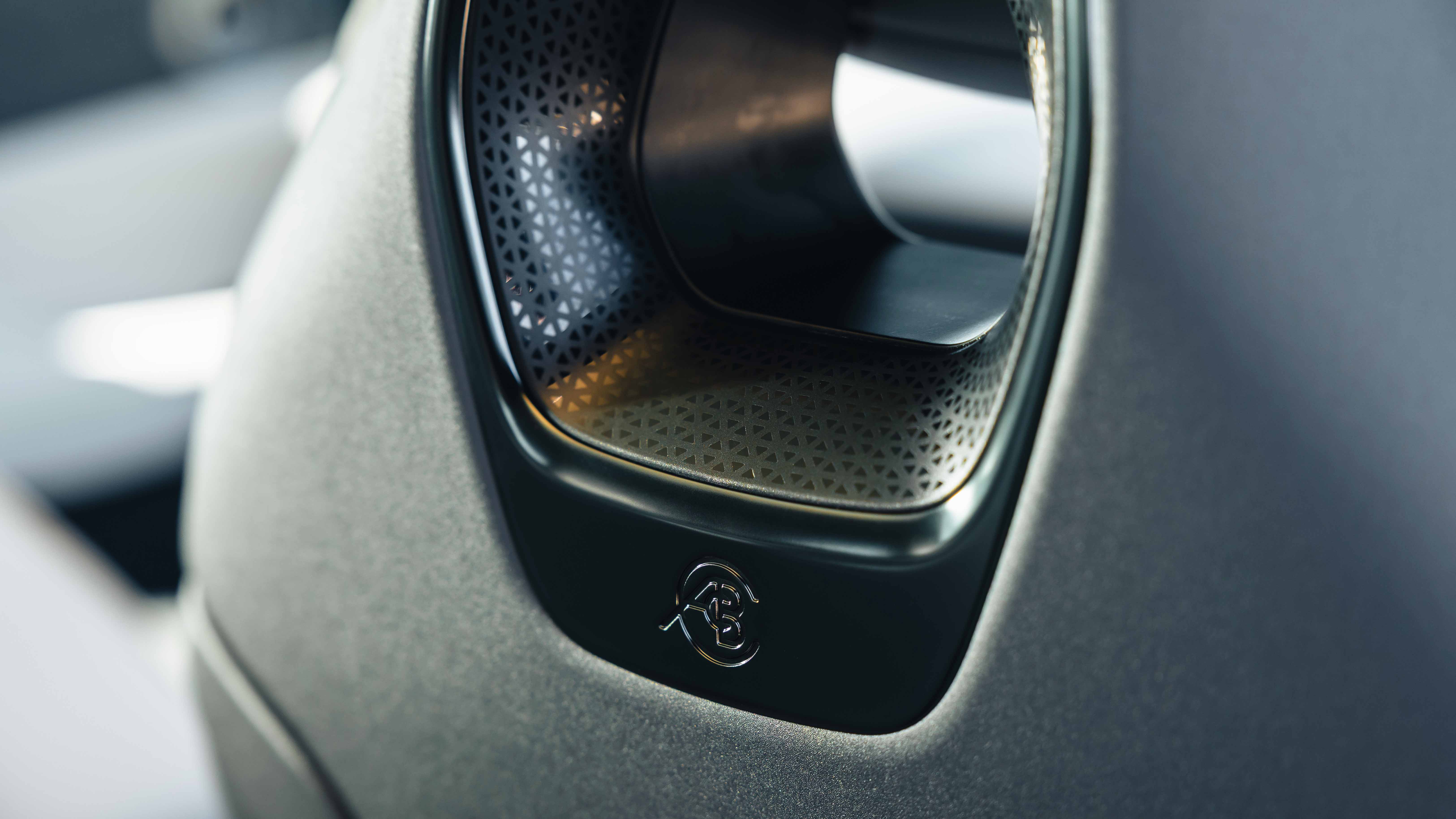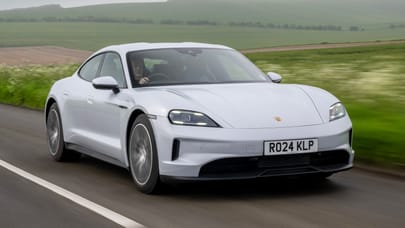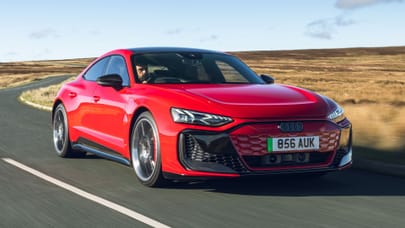
Good stuff
Arresting looks, stunning interior, rear-seat space, comfortable ride
Bad stuff
Lofty driving position, fiddly touchscreen menus, forgettable handling
Overview
What is it?
It’s the second of four electric Lotuses in the Geely regime era of the company. We’ve had the Eletre SUV: here’s its four-door saloon cousin. The almost perma-delayed 1,978bhp Evija hypercar is the third, then we’re promised a less powerful e-supercar follow-up. But the Eletre and this sleek four-door are the crucial money-spinners.
You said it’s a four-door saloon. It’s not.
Fair point: it’s actually more of a liftback like an Audi A7 or Porsche Panamera. And it’s a big’un too: over five metres long and two metres wide with air suspension and self-closing doors. In the metal the Emeya’s an arresting-looking thing, and definitely a head-turner. Those slender glowered running lights and the thick fins in the front air dam give it a menacing presence.
Though, despite a grand total of 13 ‘ACBC’ logos around the exterior and interior (the initials of company founder Colin Chapman) you might find yourself explaining to people what it actually is. “Yes, really. A Lotus. No, not like an Elise. Well yes, but…” And so on.
What versions are there?
When it first arrived in 2024 there were just three models to choose between. The base Emeya and the Emeya S shared the same 603bhp dual-motor set-up, with 524lb ft of torque. Top of the range was the Emeya R, because what EV line-up would be complete without a sickeningly fast final act? That offered 905bhp and 727lb ft, which was enough to haul it from 0-62mph in 2.8 seconds.
Why is this all in the past tense? Well, in April 2025, Lotus decided that potential customers should be a little more confused, so it set about fiddling with the trim levels of both the Emeya and the Eletra.
The initial signs were good, with 600 and 900 monikers added to loosely refer to the power outputs. But the marketing department weren't going to stop there, so now we've ended up with a range that climbs as follows: Emeya 600, Emeya 600 GT, Emeya 600 GT SE, Emeya 600 Sport SE, Emeya 900 Sport, Emeya 900 Sport Carbon.
There's more info on what each spec gets you over on the Buying tab of this review. Just don't expect us to explain why they've done this, or why there isn't a base spec Emeya 900.
How big is the battery and what’s the range?
All versions of the Emeya use a 102kWh lithium-ion battery (with 98.9kWh of that as usable capacity). That’s slightly smaller than the 112kWh cell pack (107kWh usable) in the taller Eletre SUV, but Lotus says that’s compensated for by the lower car having superior aerodynamics so the shortfall in range shouldn’t be too dramatic.
Speaking of which, the base 600 now claims a WLTP range of up to 379 miles. That drops to a maximum of 360 miles for the rest of the 600 trims. Upgrading to the 900 (previously the R, remember) will see the total range drop to between 270 and 301 miles depending on spec. Quite the cliff, then.
That's why – as with the Eletre SUV – Top Gear’s preference isn’t actually the fastest one. It’s just not worth the one-trick pony acceleration for what you lose in endurance.
Not unless I can charge it really fast.
Ah, well in that case you’re in luck, because the Emeya hoovers up electricity faster than a power grid can produce it. Its peak charging rate is 402kW, which was a record until fellow Geely brand Zeekr went and hit 460kW. Still, that means the Lotus can theoretically charge from 10-80 per cent in 14 minutes. However, finding a 400kW charger in Europe is like finding broadband that works at its advertised speed...
In its UK bumf, Lotus claims an 18-minute recharge on a 350kW charger, or a 5.5 hour juice-up using a 22kW wallbox. In fairness, in China – Lotus’s real homeland these days – there are likely to be more ultra-high-speed chargers than on the Norfolk Broads.
How much does it cost?
Well, it's less than the £2.4m you'd need for the Evija hypercar, but this is still a hugely expensive Lotus. There's more over on the Buying tab, but prices start at £84,990 and rise all the way to £139,990 for the top-spec 900 Sport Carbon. Good grief.
Our choice from the range

What's the verdict?
If you boil down electric saloons to one reason for buying, then the Porsche Panamera is the one you want because it’s objectively good to drive. The Tesla Model S is the one to have if you prize range and dependable charging infrastructure above all else. And the best all-rounder in the world, with the greatest packaging and depth of engineering, is the Lucid Air.
The Lotus Emeya’s niche is comfort and interior design. That’s not what we expect of a Lotus, but against that lot the Emeya simply isn’t the best drive in its class. Its appeal is more nuanced than that, and actually might be one that wins a lot of people over: a connectivity-obsessed cabin rich in material details with huge tech appeal and supreme quality is something that makes anodyne EV motoring a lot more palatable.
We’d have liked Lotus’s take on the subject to have been more driver-centric, but EV saloons are all so big and heavy right now, it’s unlikely it would’ve differentiated itself successfully. It’s also aggressively priced: here’s hoping the range stacks up when the weather turns chilly.
The Rivals
Trending this week
- Car Review
Renault Clio
- Car Review
Hyundai Kona




